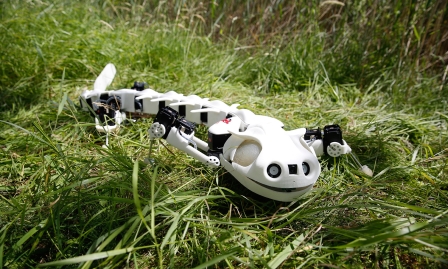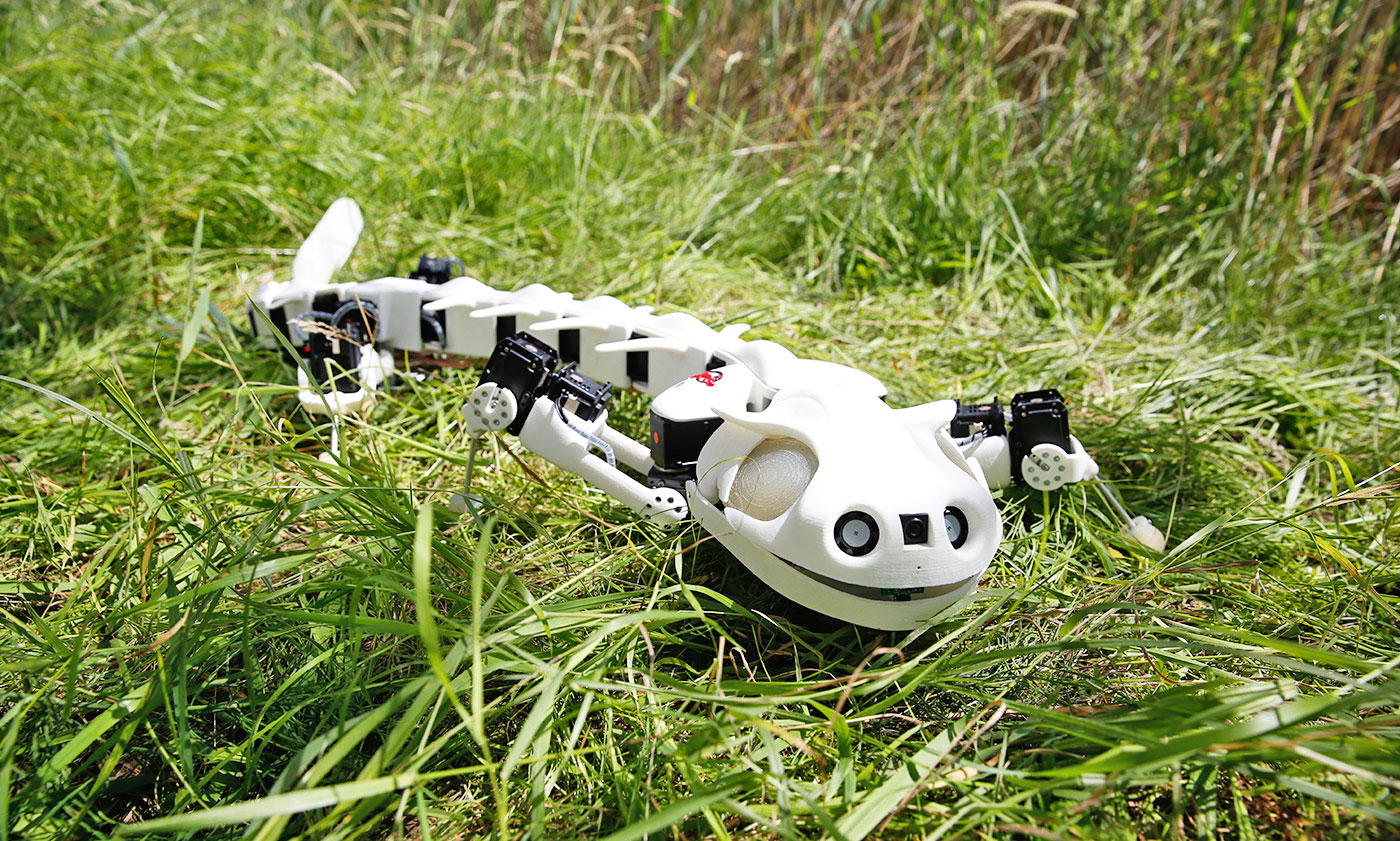Salamander robot can walk, crawl and swim like the real deal
One of the latest robots out of the Swiss Federal Institute of Technology in Lausanne (EPFL) can mimic the way a real salamander moves, whether on land or in the water. The EPFL scientists call it Pleurobot (after the species Pleurodeles waltl) and designed it after studying x-ray videos showing the amphibian walking and swimming. According to the institute, other scientists from EPFL had built salamander robots in the past, but this has the most realistic movements thus far. It’s also the first one that’s “accurately based on the 3D motion of the animal’s skeleton.”
Pleurobot is made up of 3D-printed bones, motorized joints and an electronic circuitry that serves as its synthetic central nervous system. It has fewer vertebrae than an actual salamander, but the scientists optimized their placement so that the machine’s movements look as authentic and natural as possible. Team leader Auke Ijspeert says Pleurobot can help them understand vertebrate locomotion.
You see, the lowest level of electrical stimulation in salamanders’ spinal cords is associated with walking, while the highest is associated with swimming. As such, the machine can help scientists explore the relationship between spinal cord stimulation and a vertebrate animal’s movements. In the future, this could lead to neuroprosthetic devices for both amputees and paraplegic patients.
(22)



